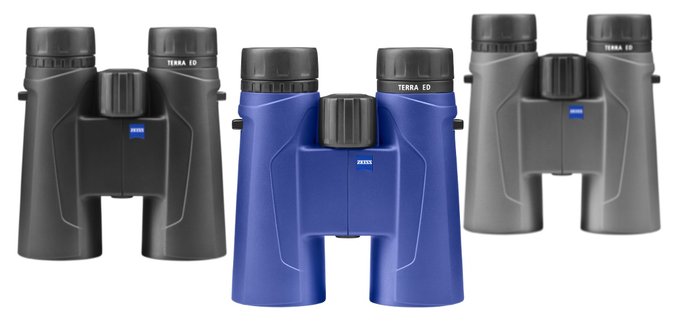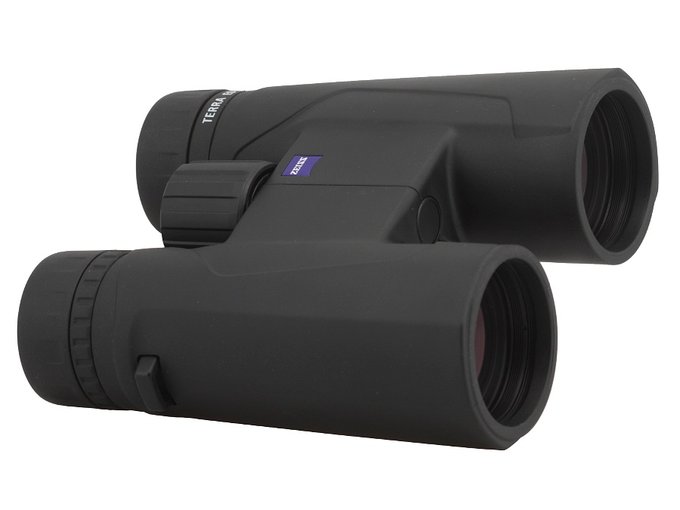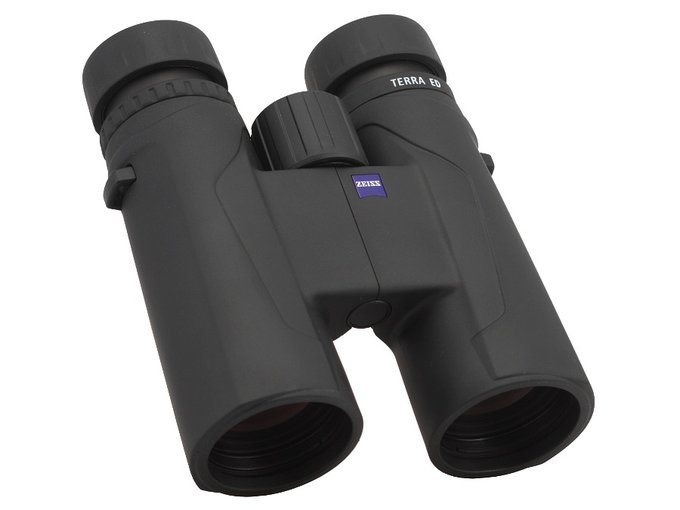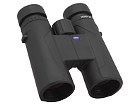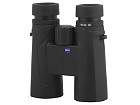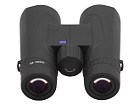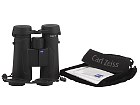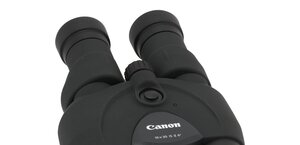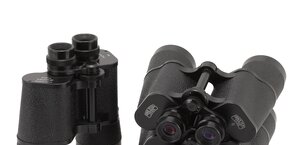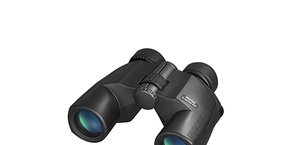In January 2013 the Zeiss company surprised everybody by presenting a new, low-budget series of binoculars produced in China under the name of Terra ED. First the 8x42 and 10x42 models were launched but in March 2015 they added the 8x32 and 10x32 and several months later such ‘babies’ as the 8x25 and the 10x25 appeared on the market as well.
The following chart shows a comparison between parameters of the Terra ED instruments. All of them feature Schmidt-Pechan roof prisms made of BaK-4 glass and are phase correction coated. As indicated by their name the ED low–dispersion glass is included in the optical construction.
The binoculars are also submersible (they withhold 100 mbar of pressure) and can be used in temperatures ranging from -15 to +60 degrees C. They come with a two-year guarantee period of the producer.
Distribution / Sales:
M.K. Szuster
web site
| Magnification |
Lens diameter |
Angular field of view |
Prisms |
Eye relief |
Weight |
Price |
| 10 |
42 |
110/1000(6.3o) |
BaK-4/roof |
14 mm |
720 g |
1890 PLN |
|
|
| Real front lens diameter |
Left: 42.1+/-
0.05 mm
Right: 42.1+/-
0.05 mm
|
8 / 8.0 pkt |
| Real magnification |
9.84+/-
0.1x
|
3/3.0 |
| Transmission |
84.8+/-
1%
|
12/25.0 |
| Chromatic aberration |
A bit lower than medium in the centre, a bit higher than medium on the edge. |
4.4/10.0 |
| Astigmatism |
Slight. |
8/10.0 |
| Distortion |
The distance of the first curved line from the field centre compared to the field of view radius: 70% ± 5% |
8/10.0 |
| Coma |
Appears in a distance of 70% of the field of view radius and is between medium and high values on the very edge . |
6.2/10.0 |
| Blurring at the edge of the FOV |
The blur occurs in a distance of 75% ± 4% from the field of view centre. |
4/10.0 |
| Darkening at the edge the FOV |
Moderate. |
3.5/5.0 |
| Whiteness of the image |
Noticeable inclination of the transmission curve with the highest transmission values for red light and a noticeable loss of blue and purple light. As a result the image has a gray-yellow hue. |
3.3/5.0 |
| Collimation |
Perfect. |
5/5.0 |
| Internal reflections |
| Left: |
Right:
|
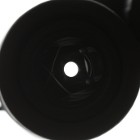 |
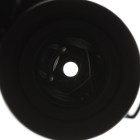 |
Area next to exit pupils looks decently well. |
3.5/5.0 |
| Housing |
Shapely and handy for the 42 mm class, comfortable to hold and to look through. Good quality rubber armour but a bit too slippery and it sticks out near the objectives. Rubberized eyecups with smooth regulation. It squelches a bit when you change the distance between the tubes. Produced in China. |
7.1/8.0 |
| Focusing |
A big, comfortable central wheel which works properly well; its full working range amounts to about 500 degrees. Individual focusing done through a ring on the right eyepiece. It is easy to use but it moves the outer element. |
4.5/5.0 |
| Tripod |
You can buy an optional brand name adapter. |
2/3.0 |
| Interpupilary distance |
from 57.7 to 76.1mm
|
5/6.0 |
| Closest focusing distance |
1.45 meter. |
2/2.0 |
| Eyepieces FOV |
Apparent field of view of 63.0 deg (according to simple formula) and 57.6 deg (according to tangent formula). |
12.5/20.0 |
| Field of view |
Measured by us amounted to 6.40 +/- 0.04 degrees and it was a tad wider than stated in the specifications. A large field for this class of equipment. |
7.5/8.0 |
| Quality of the interior of the barrels |
Dark and matt tubes with a lot of ribs and apertur es. Dark bottom. Some specks of dust. |
4.6/5.0 |
| Vignetting |
| Left: |
Right:
|
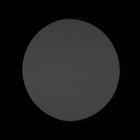 |
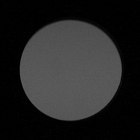 |
OL: 5.53%, OR: 1.77% |
4/8.0 |
| Prisms quality |
High quality BaK-4. |
8/8.0 |
| Antireflection coatings |
Green on objectives, green-purple on eyepieces, green on the prisms. Medium intensity. |
4.5/5.0 |
| Warranty [years] |
2 |
2/6.0 |
| Final result |
69.8%
|
132.6 / 190 pkt
|
| Econo result |
|
0pkt. |
Summary
Pros:
- solid-looking casing,
- slight astigmatism,
- good distortion correction,
- moderate brightness loss on the edge of the field of view,
- slight internal gleam,
- good blackening and cleanliness inside the tubes,
- high quality prisms made of BaK-4 glass,
- sharp image already from 1.45 metres,
- sensibly-looking coatings.
Cons:
- truncated exit pupils,
- too high level of chromatic aberration on the edge of the field of vision,
- average sharpness on the edge of the field.
The cheapest 10x42 pair of binoculars produced by Zeiss still remains a very solid optical instrument. Its build quality is beyond reproach and it didn’t have any serious optical slip-ups in our test. Will it be enough to make customers interested in this series? Of course some of them might be lured by the renown and magic surrounding the Zeiss logo but if you examine the binoculars soberly you have to admit the situation is not as rosy as it seems.
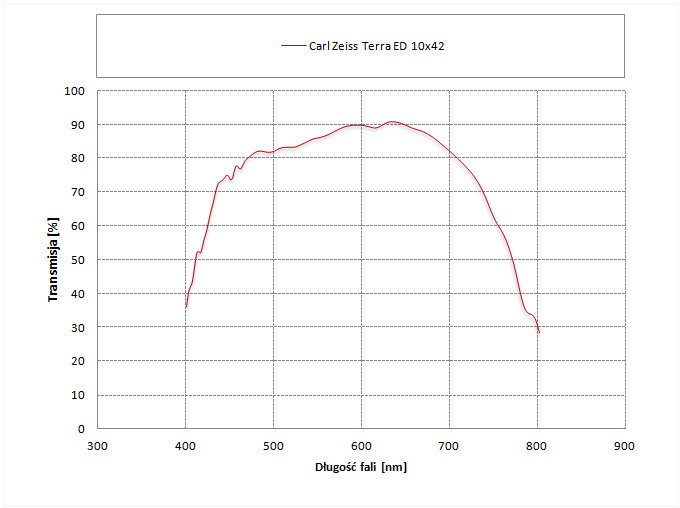
I don’t want to be misunderstood – I am still pretty sure that the Zeiss Terra ED 10x42 won’t disappoint its owners. Still the competition is fierce; there are many other producers able to offer you very good pairs of binoculars for the same amount of money or even less. It would be difficult to list them all offhandedly but if I had to suggest something I would recommend looking closer at the Olympus 10x42 EXWP I, the Bushnell Elite 10x42 ED, the Kowa 10x42 BD42-10 or the Alpen Optics Wings ED 10x42. All of these fared better in our tests than the Zeiss and some are also cheaper than the Terra. As you see you are spoilt for choice; finer details and/or your personal taste might be a decisive factor. Of course a wide choice is always better than no choice at all.

